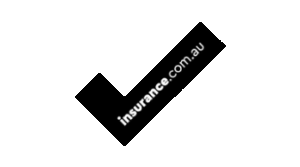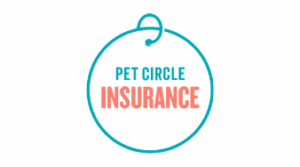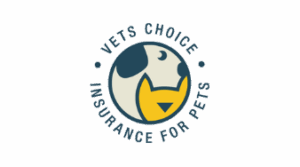Compare Pet Insurance Plan
Choosing the right pet insurance shouldn’t be confusing. Our comparison table helps you to make a better decision by giving you all the important data like annual limit, benefit percentage, excess, dental coverage Extra or Routine and furbaby score in tabular easy to understand format. So you can easily compare plans, prices, and benefits which matters the most. Whether you’ve got a playful pup or a curious cat, we make it simple to find the perfect protection for their health and your peace of mind.

What is The Comparison Table
Furbaby Score
This score reflects customer satisfaction, based on thousands of verified reviews from real pet owners. It’s a quick way to see how happy other pet parents are with their insurance experience.
Annual Limit
This shows the range of total coverage available per year. “No sub-limits” means you can use the full limit however you need, without restrictions on specific conditions or treatments.
Benefit Percentage
This percentage tells you how much of your vet bill the insurance will reimburse after any excess is applied. For example, a benefit of 90% means the insurer pays 90% of eligible costs, and you pay the remaining 10%.
Excess
This is the amount you must pay out of pocket each year before your insurance starts covering claims. A lower excess usually means higher premiums, but less upfront cost when you make a claim.
Dental Coverage
Indicates whether dental care-like cleanings, extractions, or treatment for dental disease-is included in the plan. Not all insurance policies offer this, so it’s an important consideration if dental health is a concern.
Extras Benefits or Routine Care
Shows if the policy includes coverage for routine care or additional extras, such as vaccinations, flea treatments, or wellness check-ups. These benefits can help offset the cost of preventive care and keep your pet healthy year-round.
| Provider | Product | Furbaby Score | Annual Limit Options Sub - Limts? | Benefit % Options | Min - Max Excess Excess type | Dental Coverage | Extras or Routine | |
|---|---|---|---|---|---|---|---|---|
 | Petsy Pet Protection Plus | 4.9|467 reviews | $5,000 / $10,000 / $25,000 No sub-limits | 80% / 90% | $0 - $500 Annual excess | Extras Routine | Get a quote | |
 | Petsy Puppy Protection Plus | 4.9|467 reviews | $6,000 / $12,000 / $30,000 No sub-limits | 80% / 90% | $0 - $500 Annual excess | Extras Routine | Get a quote | |
 | Petsy Kitten Protection Plus | 4.9|467 reviews | $6,000 / $12,000 / $30,000 No sub-limits | 80% / 90% | $0 - $500 Annual excess | Extras Routine | Get a quote | |
 | Stella Pet Insurance | 3.5|661 reviews | $7,500 / $12,500 / $20,000 No sub-limits | 70% / 80% / 90% | $0 - $200 Annual excess | Extras Routine | Get a quote | |
 | Knose Pet Insurance | 4.2|808 reviews | $7,500 / $12,500 / $25,000 No sub-limits | 70% / 80% / 90% | $0 - $200 Annual excess | Extras Routine | Get a quote | |
 | Top Accident & Illness Cover | 3.2|382 reviews | $12,000 Sub-limits | 80% | $0 Annual excess | Extras Routine | Get a quote | |
 | Essential Accident & Illness Cover | 3.2|382 reviews | $12,000 Sub-limits | 75% | $0 Annual excess | Extras Routine | Get a quote | |
 | Basic Accident & Illness Cover | 3.2|382 reviews | $12,000 Sub-limits | 60% | $0 Annual excess | Extras Routine | Get a quote | |
 | RSPCA Ultimate Plus Accident & Illness Cove | 3.7|7620 reviews | $20,000 Sub-limits | 80% | $0 Annual excess | Extras Routine | Get a quote | |
 | RSPCA Ultimate Accident & Illness Cover | 3.7|7620 reviews | $11,000 Sub-limits | 80% | $0 Annual excess | Extras Routine | Get a quote | |
 | RSPCA Economy Accident & Illness Cover | 3.7|7620 reviews | $11,000 Sub-limits | 75% | $0 Annual excess | Extras Routine | Get a quote | |
 | RSPCA General Accident & Illness Cover | 3.7|7620 reviews | $11,000 Sub-limits | 60% | $0 Annual excess | Extras Routine | Get a quote | |
 | insurance.com.au Pet Insurance | 3.2|1024 reviews | $5,000 / $15,000 / $25,000 No sub-limits | 70% / 80% / 90% | $0 - $200 Annual excess | Extras Routine | Get a quote | |
 | Pet Circle Pet Insurance | 3.6|5869 reviews | $10,000 / $17,500 / $30,000 No sub-limits | 70% / 80% / 90% | $0 - $150 Annual excess | Extras Routine | Get a quote | |
 | Fetch Pet Insurance | 3.6|180 reviews | $30,000 No sub-limits | 80% / 90% / 100% | $0 - $500 Annual excess | Extras Routine | Get a quote | |
 | Nose-to-Tail Cover | 3.6|4144 reviews | $10,000 / $20,000 / $30,000 No sub-limits | 70% / 80% / 90% | $250 - $500 Annual excess | Extras Routine | Get a quote | |
 | Select and Protect Cover | 4.1|2738 reviews | $15,000 / $25,000 / $35,000 No sub-limits | 70% / 80% / 90% | $0 - $600 Annual excess | Extras Routine | Get a quote | |
 | Pet Max | 3.7|532 reviews | $30,000 Sub-limits | 90% | $0 - $250 Annual excess | Extras Routine | Get a quote | |
 | Pet Plus | 3.7|532 reviews | $25,000 No sub-limits | 80% | $0 - $500 Annual excess | Extras Routine | Get a quote | |
 | Pet Protect | 3.7|532 reviews | $10,000 No sub-limits | 70% | $0 - $250 Annual excess | Extras Routine | Get a quote | |
 | Basic Care | 3.2|503 reviews | $15,000 Sub-limits | 75% | $0 - $100 Annual excess | Extras Routine | Get a quote | |
 | Comprehensive Care | 3.2|503 reviews | $15,000 Sub-limits | 80% | $0 - $50 Annual excess | Extras Routine | Get a quote | |
 | Premium Care | 3.2|503 reviews | $20,000 Sub-limits | 85% | $0 - $50 Annual excess | Extras Routine | Get a quote | |
 | Real Standard Cover | 3.7|430 reviews | $12,000 Sub-limits | 75% | $0 Annual excess | Extras Routine | Get a quote | |
 | Real Premium Cover | 3.7|430 reviews | $12,000 Sub-limits | 80% | $0 Annual excess | Extras Routine | Get a quote | |
 | Gold Cover | 3.5|167 reviews | $20,000 Sub-limits | 80% | $0 Annual excess | Extras Routine | Get a quote | |
 | Platinum | 3.5|167 reviews | $30,000 Sub-limits | 80% | $0 Annual excess | Extras Routine | Get a quote | |
 | Classic Cover | 0.8|0 review | $15,000 Sub-limits | 70% / 80% | $0 - $200 Annual excess | Extras Routine | Get a quote | |
 | Plus Cover | 0.8|0 review | $30,000 No sub-limits | 80% / 90% | $0 - $200 Annual excess | Extras Routine | Get a quote | |
 | Standard | 4.1|432 reviews | $12,000 Sub-limits | 80% | $0 - $200 Annual excess | Extras Routine | Get a quote | |
 | Ultimate | 4.1|432 reviews | $20,000 Sub-limits | 80% | $0 - $200 Annual excess | Extras Routine | Get a quote | |
 | Basic | 3.3|677 reviews | $5,000 Sub-limits | 80% | $0 - $200 Annual excess | Extras Routine | Get a quote | |
 | Standard | 3.3|677 reviews | $10,000 Sub-limits | 80% | $0 - $100 Annual excess | Extras Routine | Get a quote | |
 | Comprehensive | 3.3|677 reviews | $30,000 Sub-limits | 80% | $0 - $500 Annual excess | Extras Routine | Get a quote | |
 | Comprehensive Plus | 3.3|677 reviews | $24,000 Sub-limits | 80% | $0 - $100 Annual excess | Extras Routine | Get a quote | |
 | Essential | 3.6|302 reviews | $12,000 Sub-limits | 80% | $100 - $200 Annual excess | Extras Routine | Get a quote | |
 | Comprehensive | 3.6|302 reviews | $15,000 Sub-limits | 80% | $100 - $200 Annual excess | Extras Routine | Get a quote | |
 | Plus | 3.6|302 reviews | $25,000 Sub-limits | 80% | $100 - $200 Annual excess | Extras Routine | Get a quote | |
 | Guardian Silver Cover | 3.2|37 reviews | $8,000 Sub-limits | 80% | $0 Annual excess | Extras Routine | Get a quote | |
 | Guardian Gold Cover | 3.2|37 reviews | $12,000 Sub-limits | 75% | $0 Annual excess | Extras Routine | Get a quote | |
 | Guardian Platinum Cover | 3.2|37 reviews | $12,000 Sub-limits | 80% | $0 Annual excess | Extras Routine | Get a quote | |
 | Pet Premium | 3.7|68 reviews | $12,000 Sub-limits | 80% | $0 - $200 Annual excess | Extras Routine | Get a quote | |
 | Pet Premium plus Routine Care | 3.7|68 reviews | $12,145 Sub-limits | 80% | $0 - $200 Annual excess | Extras Routine | Get a quote | |
 | Essential | 3.2|29 reviews | $10,000 / $15,000 No sub-limits | 80% / 100% | $100 - $200 Annual excess | Extras Routine | Get a quote | |
 | Ultimate | 3.2|29 reviews | $10,000 / $15,000 / 25,000 / 40,000 No sub-limits | 80% / 100% | $100 - $500 Annual excess | Extras Routine | Get a quote | |
 | Total | 3.5|107 reviews | May vary No sub-limits | 100% | $0 Annual excess | Extras Routine | Get a quote | |
 | Core | 3.5|107 reviews | $500 per condition No sub-limits | 90% | $0 Annual excess | Extras Routine | Get a quote | |
 | Core Plus | 3.5|107 reviews | $1000 per condition No sub-limits | 90% | $0 Annual excess | Extras Routine | Get a quote | |
 | Core | 3.7|1223 reviews | $5,000 / $10,000 / 15,000 No sub-limits | 80% / 90% / 100% | $0 - $200 Annual excess | Extras Routine | Get a quote | |
 | Vital | 3.7|1223 reviews | $5,000 / $10,000 / 15,000 No sub-limits | 80% / 90% / 100% | $0 - $200 Annual excess | Extras Routine | Get a quote | |
 | Key | 3.7|1223 reviews | $5,000 / $10,000 / 15,000 No sub-limits | 80% / 90% / 100% | $0 - $200 Annual excess | Extras Routine | Get a quote | |
 | Young Pets | 2.6|73 reviews | $5,000 / $12,000 / 18,000 Sub-limits | 65% / 80% | $0 - $99 Annual excess | Extras Routine | Get a quote | |
 | Seniors | 2.6|73 reviews | $5,000 / $10,000 / 15,000 Sub-limits | 65% | $99 - $199 Annual excess | Extras Routine | Get a quote | |
 | Prime Royal Accident Only Cover | 3.2|53 reviews | $10,000 Sub-limits | 80% | $0 Annual excess | Extras Routine | Get a quote | |
 | Prime Imperial Accident & Illness Cover | 3.2|53 reviews | $14,000 Sub-limits | 80% | $0 Annual excess | Extras Routine | Get a quote | |
 | Prime Sovereign Accident & Illness Cover | 3.2|53 reviews | $14,000 Sub-limits | 85% | $0 Annual excess | Extras Routine | Get a quote | |
 | Pro Cover | 3.8|20 reviews | $12,000 Sub-limits | 80% | $200 - $500 Annual excess | Extras Routine | Get a quote | |
 | Elite Cover | 3.8|20 reviews | $15,000 Sub-limits | 80% | $200 - $500 Annual excess | Extras Routine | Get a quote | |
 | Basic | 2.5|0 review | $12,000 Sub-limits | 60% / 80% | $0 Annual excess | Extras Routine | Get a quote | |
 | Middle | 2.5|0 review | $12,000 Sub-limits | 60% / 80% | $0 Annual excess | Extras Routine | Get a quote | |
 | Top | 2.5|0 review | $12,000 Sub-limits | 60% / 80% | $0 Annual excess | Extras Routine | Get a quote | |
 | Accident & Illness Cover | 4.1|642 reviews | $12,000 Sub-limits | 75% / 85% | $0 Annual excess | Extras Routine | Get a quote | |
 | Accident Only Cover | 4.1|642 reviews | $8,000 Sub-limits | 75% / 85% | $0 Annual excess | Extras Routine | Get a quote | |
 | Single core “Illness & Injury” cover | 3.5|36 reviews | $12,000 Sub-limits | 80% | $0 - $200 Annual excess | Extras Routine | Get a quote | |
 | Silver Cover | 3.2|77 reviews | $8,000 Sub-limits | 80% | $0 Annual excess | Extras Routine | Get a quote | |
 | Gold Cover | 3.2|77 reviews | $12,500 Sub-limits | 80% | $0 Annual excess | Extras Routine | Get a quote | |
 | Platinum Cover | 3.2|77 reviews | $14,500 Sub-limits | 80% | $0 Annual excess | Extras Routine | Get a quote | |
 | Standard | 4.1|172 reviews | $12,000 Sub-limits | 80% | $100 Annual excess | Extras Routine | Get a quote | |
 | Core | 3|785 reviews | $5,000 / $10,000 / 15,000 No sub-limits | 80% / 90% / 100% | $0 - $200 Annual excess | Extras Routine | Get a quote | |
 | Vital | 3|785 reviews | $5,000 / $10,000 / 15,000 No sub-limits | 80% / 90% / 100% | $0 - $200 Annual excess | Extras Routine | Get a quote | |
 | Key | 3|785 reviews | $5,000 / $10,000 / 15,000 No sub-limits | 80% / 90% / 100% | $0 - $200 Annual excess | Extras Routine | Get a quote | |
 | Basic | 3.5|802 reviews | $5,000 Sub-limits | 80% | $0 - $200 Annual excess | Extras Routine | Get a quote | |
 | Standard | 3.5|802 reviews | $10,000 Sub-limits | 80% | $0 - $100 Annual excess | Extras Routine | Get a quote | |
 | Comprehensive | 3.5|802 reviews | $30,000 Sub-limits | 80% | $0 - $500 Annual excess | Extras Routine | Get a quote | |
 | Comprehensive Plus | 3.5|802 reviews | $24,000 Sub-limits | 80% | $0 - $100 Annual excess | Extras Routine | Get a quote |
What is the
Furbaby Score ?
The Furbaby Score looks at ratings across platforms to show satisfaction levels and also tracks how active and recent the reviews are, giving you a sense of how engaged each provider is with their customers. With the Furbaby Score, you can feel more confident in choosing insurance for your pet and your peace of mind.

Steps to Make a Smart Decision
1
Identify your pet's needs
Pets have varying insurance needs based on their age and health conditions. Older pets may require more coverage, while younger pets may need more coverage for accidents.
2
Compare coverage options
Prioritize plans that cover your pet’s specific needs like preventative care, emergencies, and chronic conditions. Carefully read the policy to understand the coverage details.
3
Compare deductibles & premiums
Consider how much you can afford to pay out of pocket for your pet’s care and compare different plans’ deductibles and premiums.
4
Check for exclusions
Make sure to read the policy’s exclusions carefully. Some plans may not cover pre-existing conditions or certain breeds.
5
Compare coverage options
Check the insurer’s reputation and ratings to ensure they provide good customer service and paying out claims in a timely manner.
6
Compare deductibles & premiums
Don’t just settle for the first plan you find. Get quotes from several insurers and compare them side by side to find the best value for your money.

Ultimate Guide to Pet Insurance Comparison
Pet insurance comparison involves evaluating and contrasting different policies and providers to find the best option for your pet’s health needs and budget. Factors to consider include coverage options, deductibles, premiums, co-pays, waiting periods, pre-existing conditions, exclusions, and provider reputation. By comparing quotes, coverage options, and reading reviews, you can make an informed decision to protect your pet’s health and well-being.
Pet insurance comparison involves evaluating different policies to choose the best one for your pet. It includes comparing coverage, benefits, deductibles, premiums, and terms. It helps find a policy that suits your budget and covers your pet’s needs.
Frequently asked questions
Still have a few things you’d like to clear up about pet insurance? We’re here to help!